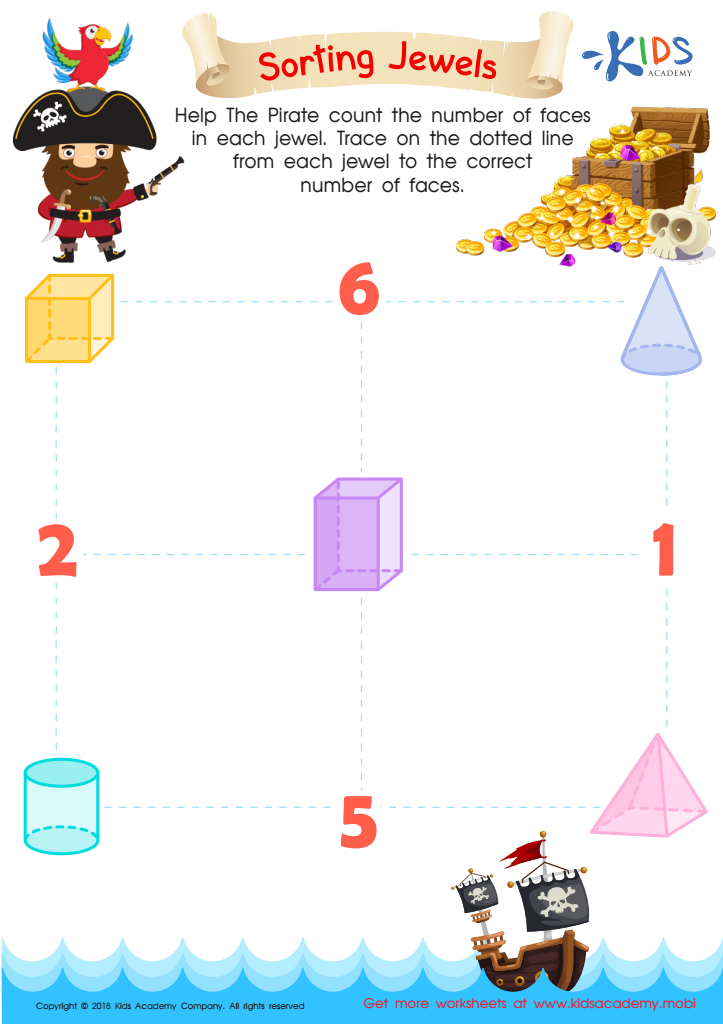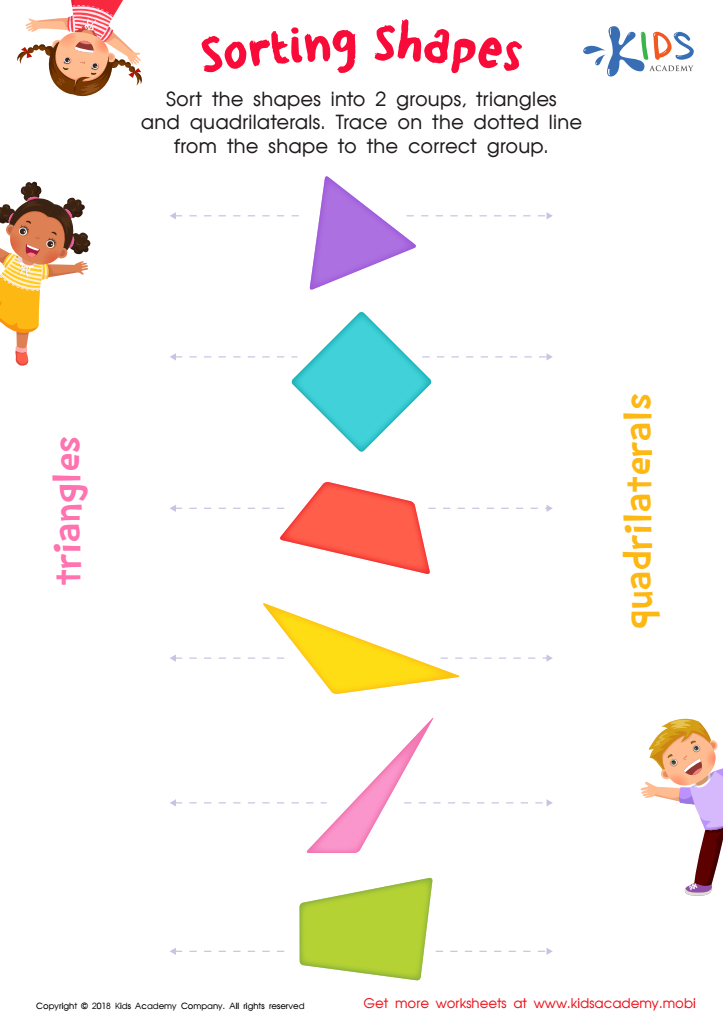Categorization skills Geometry Worksheets for Ages 7-9
4 filtered results
-
From - To
Explore our engaging Categorization Skills Geometry Worksheets designed for children ages 7-9! These worksheets focus on helping young learners identify and classify shapes, enhancing their understanding of geometry in a fun and interactive way. With a variety of activities, your child will develop essential skills in recognizing patterns, grouping different geometric figures, and building critical thinking abilities. Ideal for both classroom and home use, our worksheets are perfect for reinforcing lessons while keeping kids excited about learning. Encourage creativity and skill development in geometry with our thoughtfully crafted worksheets that make learning enjoyable and effective! Get started today!


Sorting Jewels Worksheet


Dinner Shapes: Making a Whole Worksheet


Sorting Shapes Worksheet


Shape Sorter Worksheet
Categorization skills in geometry are crucial for children aged 7-9, as they are foundational for cognitive development and mathematical understanding. At this age, children begin to engage with various shapes, attributes, and spatial relationships, making it vital to help them identify and categorize these elements effectively. When parents and teachers encourage strong categorization skills, children learn to recognize properties of shapes, such as angles, sides, and symmetry, thus enhancing their ability to classify objects based on specific characteristics.
Beyond geometry, these skills promote critical thinking and problem-solving abilities. For example, understanding how to categorize shapes lays the groundwork for more complex concepts like fractions and measurement later on. Additionally, categorization skills help children develop organizational and analytical thinking, which transcend the math classroom and are applicable in everyday life.
Furthermore, engaging in categorization activities strengthens language development as children learn to articulate their observations. By nurturing these skills, parents and teachers support not only the academic growth of children but also their overall intellectual curiosity. Investing in geometry categorization skills empowers children to become confident learners equipped for future challenges in math and beyond. Therefore, emphasizing geometry at this stage sets a vital pathway for lifelong learning.
 Assign to My Students
Assign to My Students





























